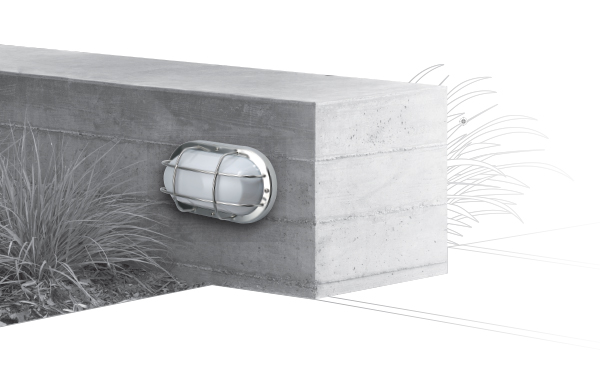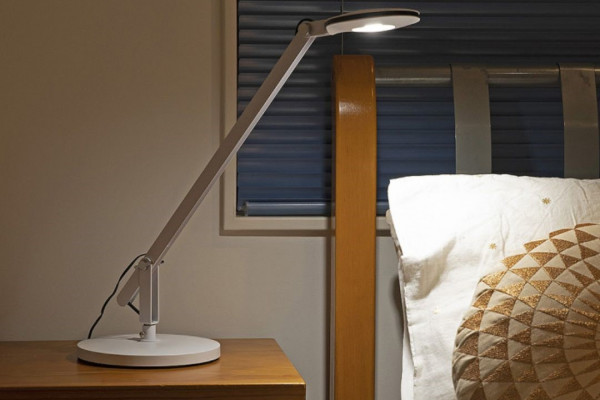OUTDOOR LIGHTS MATERIALS AND FINISHES GUIDE
When choosing outdoor luminare Materials & Finishes - Consider all the following:

Expectations: Visual appearance and if to be kept looking as new or not?
Exposure: Vandalism, Weather, Contaminants?
Maintenance Costs: Monthly maintenance or Annual maintenance?
Products Cost: Once material and finish have been selected, choose cost level of luminare.
Polycarbonate and other Thermoplastic Fixtures
These are the nearest thing to the “Ideal” of everlasting and Maintenance free. Polycarbonate fixtures can be quite robust, but many thermoplastic fixtures are not as vandal-proof in public areas as their metal equivalent.
Aluminium Fixtures
These can be purchased in low-cost or expensive quality. Expensive fixtures are made of pure Aluminium and go through extensive pre-treatment and paint processes. The lower cost products need more care and maintenance to remove contaminants. Both product and maintenance costs have to be part of a balanced purchasing decision, few people like the “Flaking Paint” look. Take care not to scratch or chip the paint finish when handling and installing. It is highly recommended that outdoor lighting fixtures are not installed until the building project, landscaping and finishing are complete. If earlier installation is unavoidable ensure that fixtures are carefully wrapped and masked after installation. Painted fixtures should be washed with soapy water regularly, the maintenance period will be extended if a car wax is applied.
Installation
Wall mounted fixtures should have sealant applied along top and sides of fixtures mounting base.
Bare Metal Finishes, Stainless Steel, Copper and Brass
These fittings usually have a thin coat of lacquer applied at the factory, this is a temporary protection to ensure a uniform finish at point of installation.
Some situations lend themselves to natural discolouration (e.g.) Browning of Copper and Stainless Steel or the Verdigris look on Brass. Such corrosive effects are surface conditions, not structural. A lot of Stainless Steel fixture owners however wish to maintain the attractive shiny finish of the bare metal as purchased.
Cleaning of Stainless Steel Fixtures
Outdoor Stainless Steel fittings can be a high maintenance option. Stainless Steel will not corrode with pure water alone, however dampness can cause corrosion like stains when there are contaminants on the steel. There are various grades of Stainless Steel designed to resist different types of contaminants. Superlux use grades that are most suitable for the vast variety of lighting installations. Contaminants can be sea air, garden/agricultural sprays, fertilisers, natural tree and plant materials, swimming pools and man-made pollutants. Where these pollutants wash off with rain in open areas, problems are less likely, but when bare metal fixtures are installed in sheltered or tree covered areas, corrosion staining is inevitable. In such situations, exposed to the seaside or othercontaminants, regular washing with soapy water is a must to maintain the shiny bare metal look. A car wax or a special steel rejuvenating polish can be applied to extend the maintenance period.
Landscape Lighting
Landscape lighting fixtures are often not very visible, however they provide highly dramatic effects on shrubs, trees, garden features and building facades. It is highly preferable to plan the lighting before landscaping.
Very small gardens can be successful using 12-volt cabling only, as the cable runs will not be long enough to have a problem with voltage drop. In this case, cables and lights can be planned later, cable thrown under decks, bark or shallow buried are totally safe. For larger gardens it is best to run mains voltage to permanent fixtures or to in ground or housed transformers from where 12-volt lights can be run. Be sure to use a registered Electrician.
Installation:
It is highly recommended that outdoor lighting fixtures are not installed until the building project, landscaping and finishing are complete. If earlier installation is unavoidable ensure that fixtures are carefully wrapped and masked after installation.
Common effects are:
- Up lighting: Inground lighting onto substantial trees that can be viewed from any direction
- Spotlighting: Highlighting of selected garden features using shielded spot lights
- Shadowing: Light directed across an object creates texture and provides decorative shadows.
- Silhouetting: Lighting behind trees and shrubs. Interesting branch structures are dramatic when silhouetted on a wall.
- Cross Lighting: To display larger areas and soften the shadows use illumination from two or more fixtures.
Navigation
- Outdoor Lights Materials and Finishes Guide
- Lamps – Light Sources
- Control Gear Information & Trouble Shooting
- IP Rating Chart
- Declaration of Compliance with Standards
- Bulb Terminology and Identification
- 12Volt DC Supply LED Strip & Module Planning
- Advantages of the Superlux LL and LLED Garden Lighting system
- 12 Volt Garden Lights
- The Different Purposes Of Lighting
- Lighting For Different Areas
- A Guide To Installing Lights
- Energy Efficient Lighting
- Colour Temperature Guide
- CRI: Colour Rendering Index
- Uniform Downlight Spacing Formula
- Downlight Classification Guide
- Lumens: What Are They And How Much Do I Need?
- Lux: What is it And How Much Do I Need?
- Globes With 60mmØ Fitter Included
- How Do Sensor Lights Work?
